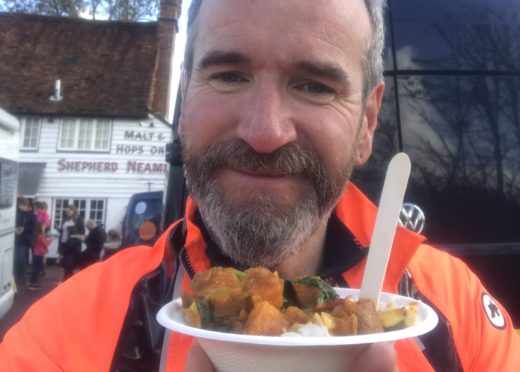Cycling is an activity that requires lots of good fuel to keep our bodies functioning over long rides. Although the term ‘bonk’ may induce sniggers among many, for cyclists and other endurance athletes bonking can be quite a serious situation and is the term used to describe the point where you have exhausted your body’s glycogen stores and becoming hypoglycaemic.
It has happened to me once and I felt my body slowly shutting down; even my eyesight was impaired and I remember staring straight ahead, as if peering towards the light at the end of a black tunnel, desperately looking for somewhere to buy food. I found salvation at a petrol station in Crieff and then spent the next 20 minutes sitting on the pavement munching through chocolate bars and tins of fizzy drinks before I could gather enough composure to actually stand up again.
So, as the engine to your trusty steed, you need to be topped up with quality fuel to power your ride. There are many traditions related to that fuelling process – carb-loading with pasta the night before a ride is one.
However, a growing number of nutritionists are challenging such beliefs. They believe that a diet heavy in starchy foods causes your body to burn sugar instead of fat, making you liable to bonk more easily.
Those starchy carbohydrates are ideal immediately before and during an activity as they are digested quickly and easily. In contrast, fruits and vegetables are rich in carbohydrates, but digest more slowly, giving you a slow-burn fuel that is suited to energy provision outwith your ride.
Fruit and veg are a more substantial source of carbohydrate than most people realise. For example, 128 grams of pasta will provide 40 grams of carbohydrates. One large, baked sweet potato with its skin on will provide 44 grams of carbohydrate.
As I said last week, we have also been led to believe that products labelled with marketing slogans like power and energy are magically better at providing us with fuel for exercise than fresh and natural produce. We are tricked into thinking that processed energy foods are healthy, but instead they’re often packed with sugar and salt.
The internet is jam-packed with truths, untruths and confusing messages when it comes to diet and nutrition for endurance athletes. Ultimately I believe the bottom line comes down to eating as much real food as possible. When I brief cyclists before a multi-day ride, such as the 735km Raid Pyrenean, I try to emphasise they shouldn’t rely on energy drinks, bars and gels to get them through. I have seen many who have tried and failed with such an approach.
Sensible eating to fuel a ride comes from taking a step back and realising that not all food is created equal. Do a bit of research and find what works best for you, but be prepared to question what you have been told before.
Where to Ride: Tullybaccart
OS 1:50,000 Map 54 NO348341
Distance: 18 miles/ 29km
Details: Starting in Muirhead to the north-west of Dundee, head towards Newtyle on the B954. As you enter Newtyle turn left at the bottom of the hill towards Keillour. After half a mile take another left towards Kinpurnie Castle and Leys then follow this road until you join the A923 on the North side of the Tullybaccart climb. You can follow the A923 all the way back to Muirhead, but a nice wee detour is to follow the Lundie Road, which will take you back onto the B954 just north of Muirhead










